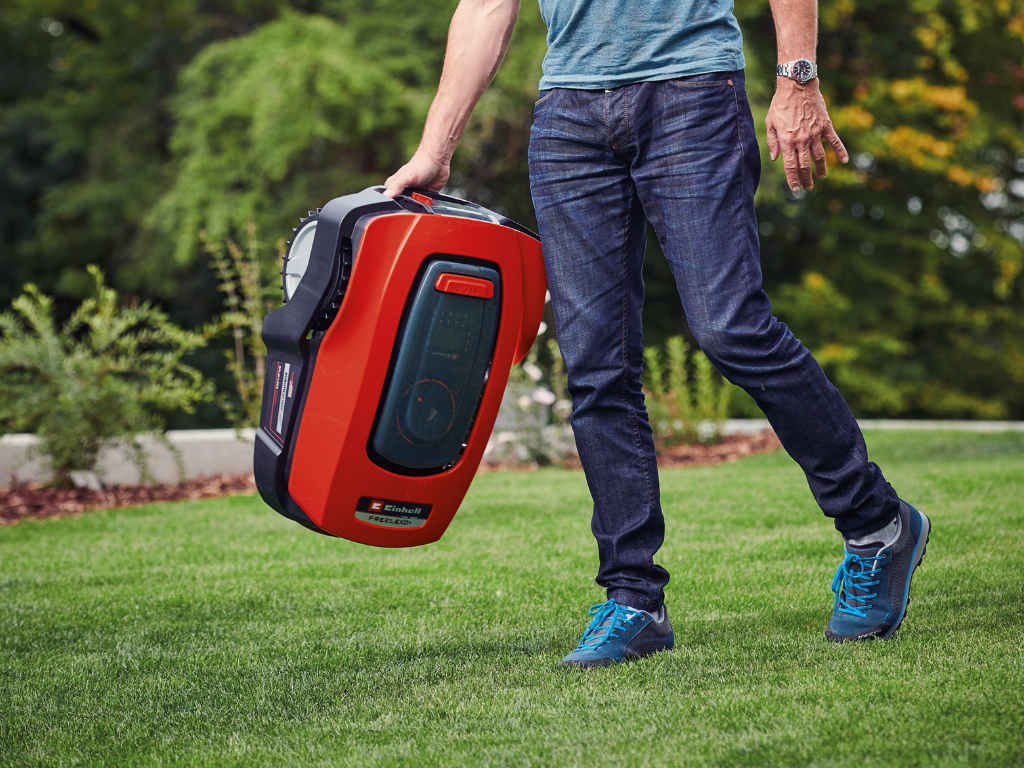Robot lawnmowers in spring: Get your mower ready for the season!
Temperatures are rising; the lawn slowly starts to grow again. Many lawn robot owners are now asking themselves: ‘when should I get the robotic lawn mower out of its winter break again?’ This article will show you the right time to get your robot started again and what to keep in mind for the first lawn mow after the winter break.
When is the season start for robot lawnmowers?
The lawnmowers winter break ends when the grass is starting to grow again, which of course differs from region to region due to the different weather conditions in each region. If the temperatures are already rising early in spring, the season for lawn mowing will automatically start sooner as well. Grass usually starts subtly growing when the temperature hits at least 6 degrees Celsius, as soon as it hits 10 degrees the real and significant growth starts. A rule of thumb says that the best time for the first cut is between March and early April. From then on, the robot can mow again regularly.

What to look out for when using the robotic lawnmower for the first time in spring?
What cutting height at the beginning of the season?
If the lawn is already higher than the maximum cutting height of your robotic lawnmower, the lawn has to be mowed with a conventional lawn mower first. However, even if the robot can still handle the maximum height of the grass there are two things to consider before the first cut in spring.
- One third rule for mowing lawns
Generally, the lawn should only be cut one third of its length. If the lawn is mowed too short, the roots will be damaged and it will take longer for the lawn to recover and growth to resume. When dry outside, it can cause the lawn to burn and turn brown. Hence, it is very important to try to get to the desired length gradually. - Mulching principle of the robot mower
A robot lawn mower works according to the mulching system, i.e. unlike other lawnmowers, the cut off lawn will remain on the lawn once it has been mowed. The cuts will serve the lawn as fertilizer, heat protection and as a protection against evaporation. However, if the grass clippings become too long, the stalks get too little light, matting or the spread of diseases can occur.
Spring check for the robotic lawnmower
Before mowing the lawn for the first time in March, you should take time to check the robot and its functions. If the lawn mower has not been cleaned in autumn before wintering, now is the time, since dirt on the contact surfaces can, for example, result in the mower not being loaded correctly. Additionally, the charging station should also be cleared of any dried grass or other dirt from the previous mowing season. Take your time and check the functionality of all elements before starting:
- Are the knives still sharp?
- Is there a signal between the charging station and the robot mower? Does the robotic lawnmower find its way back to the charging station on its own?
- Are the data and time settings still correct?
- Is the schedule for the robot still up to date?
- Is the battery fully charged and ready to be used?
- Is there a software update for your robot model?
- Is there an update for the app that controls the robot?
- Is the boundary wire still optimally laid? If there is any damage to it, do you have any connecting clamps for the boundary wire?
- Are the fastening hooks with the cable firmly anchored in the floor?

If there are new obstacles in your garden, for example because you have planted a tree, the boundary wire must be adapted to the new conditions. In this service video we will show you all the tips for laying the wire and how you can repair a broken cable yourself:

Tip: By the way, Einhell offers a winter service. You can bring your lawnmower for the winter and a service team will take care of storage, cleaning, maintenance and any repairs that could have come up. Therefore, your lawnmower robot is guaranteed to be ready for spring.
Scarifying despite a robotic lawnmower?
Proper lawn care also includes scarifying. Experience shows that gardens with robotic lawnmowers tend to scarify less often. Regular mowing and the mulch cutting system of a robot lawn mower ensures healthy growth and reduces matting. If moss and weeds still spoil your lawn, you should remove it with a scarifier. In our article on scarifying, we explain what you should consider with scarifying.
Garden Check before the robotic lawnmower’s first mow of the season
Before the robotic lawnmower’s first mow of the season, the garden should also checked before the device can regularly draw circles on the lawn.
- Have all obstacles such as molehills, toys, garden tools etc. been removed from the lawn?
- Is the boundary wire laid so that sensitive puddles or dangerous places as the pond are avoided?
- Have all old leaves, branches and fallen fruit, etc. been removed?
Fertilizing despite the robot lawn mower?
Similar to scarifying, lawns that use robots usually need fertilizers less often as the grass clippings fall back on the turf and serve as a natural mulch. The microorganisms in the soil then convert the grass clippings into valuable nutrients. However, after winter, your lawn may need additional fertilizer, which should be provided in the form of fertilizer. However, be careful as over fertilization can burn the lawn! A spreader can help with even distribution of fertilizer over large areas.
